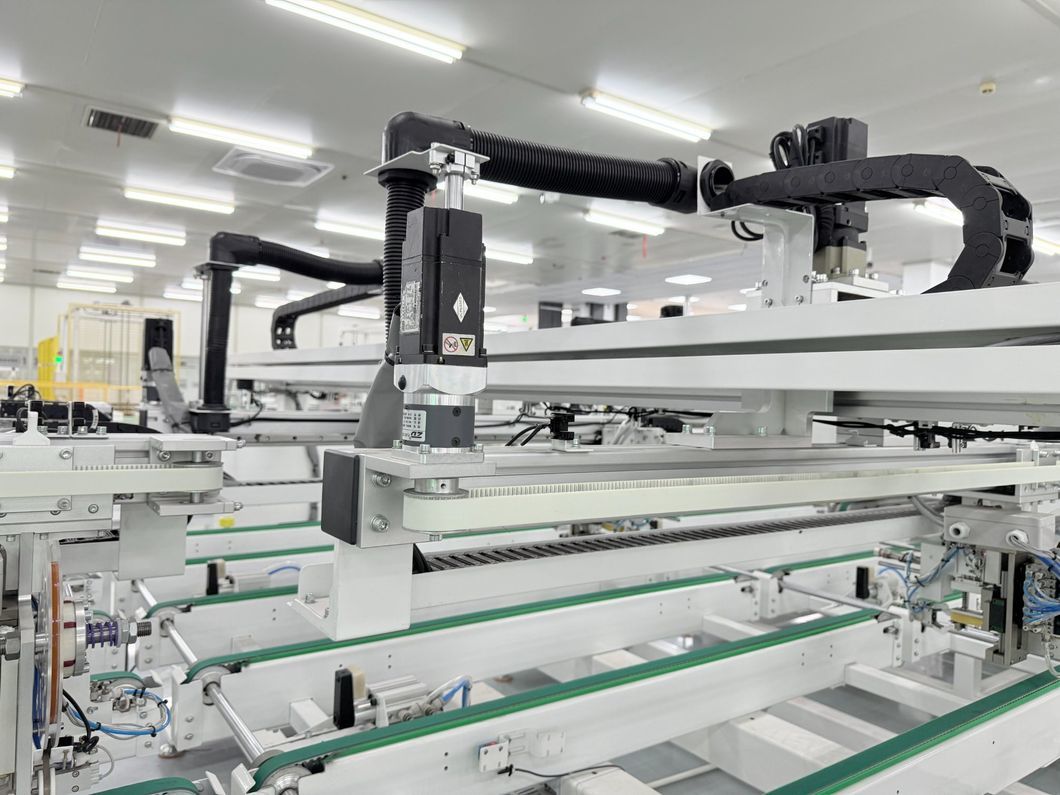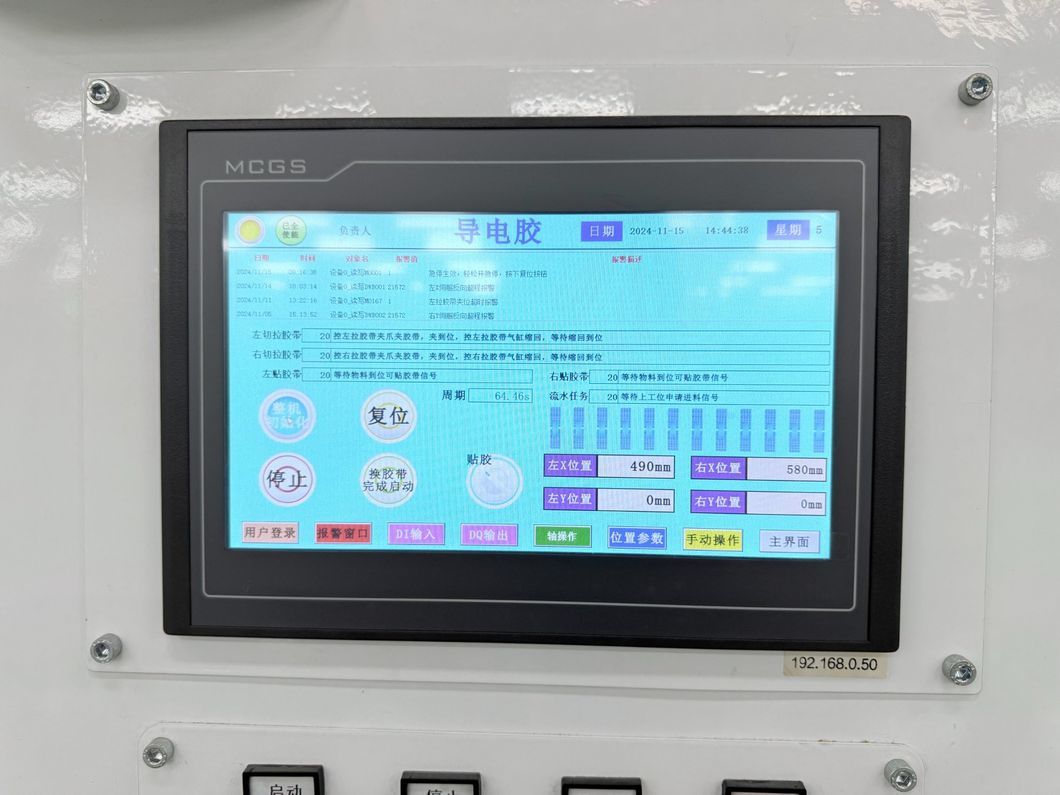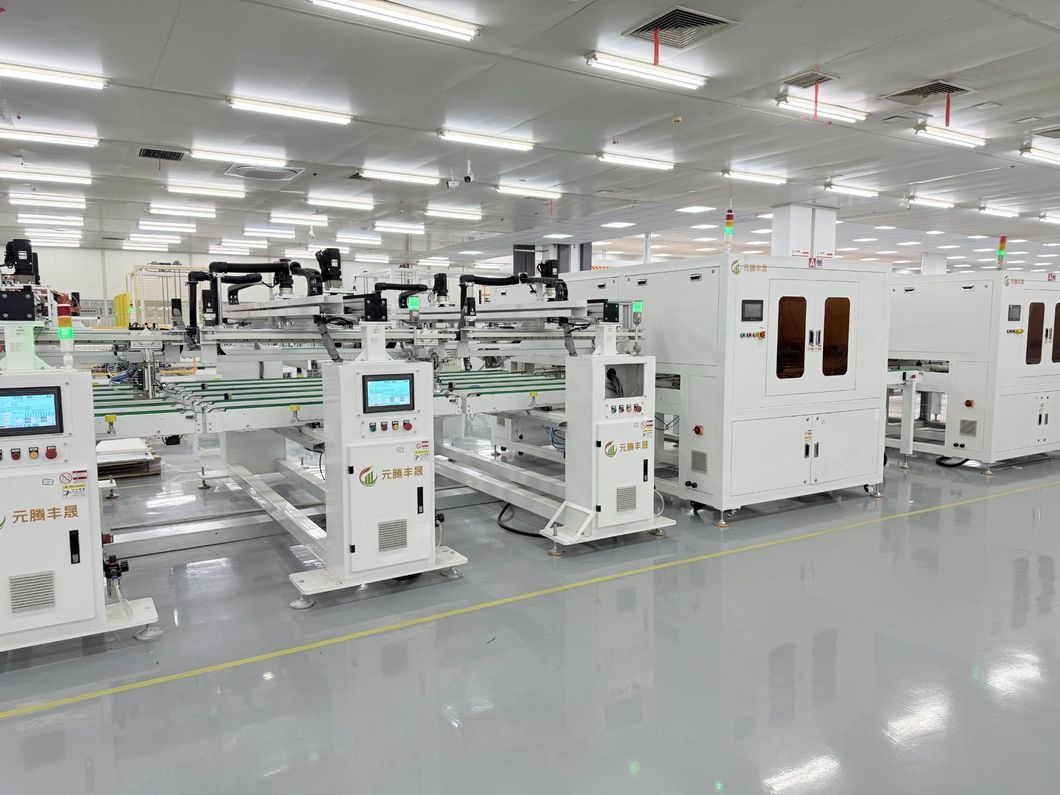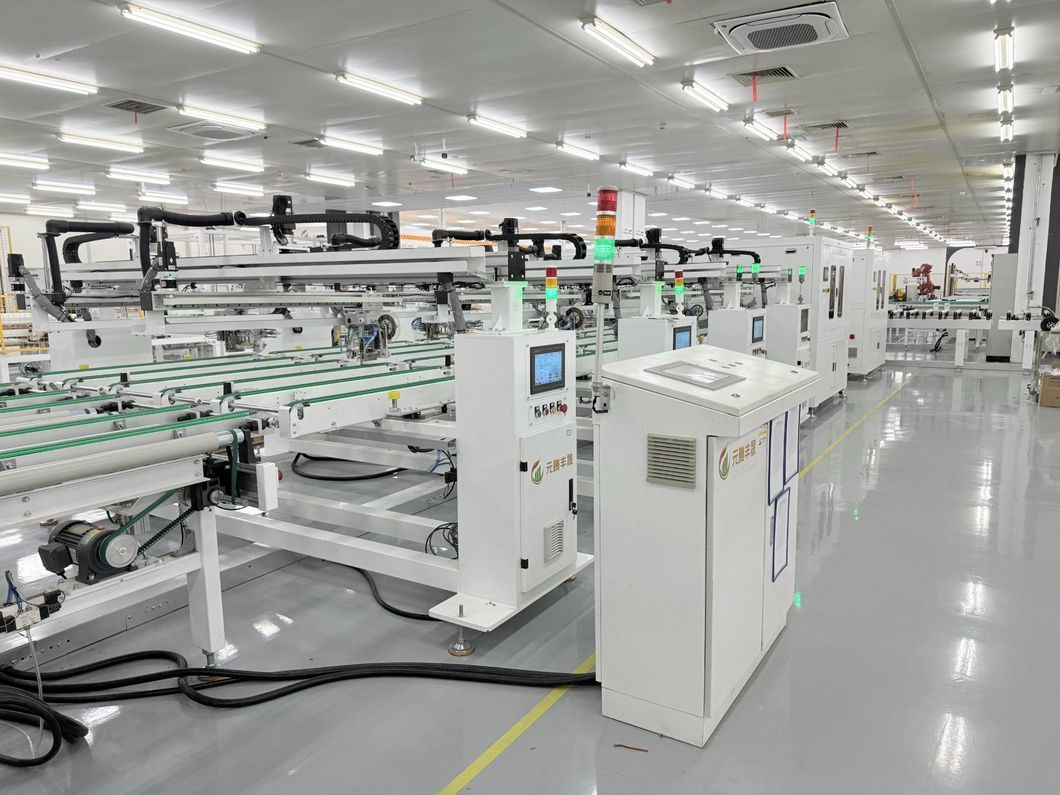BIPV Panel Conductive Tape Machine
Product Description
 They are capable of producing conductive tape with high precision
in terms of thickness, width, and length. This ensures consistent
performance of the tape in various applications, such as in
electronic devices where accurate electrical conductivity and
proper fit are crucial.
They are capable of producing conductive tape with high precision
in terms of thickness, width, and length. This ensures consistent
performance of the tape in various applications, such as in
electronic devices where accurate electrical conductivity and
proper fit are crucial.
These machines can operate continuously for extended periods,
enabling mass production of conductive tape. The automated
processes involved, like feeding of raw materials, coating, and
winding, significantly reduce the production time per unit and
boost overall productivity.


Product Parameters


| Product parameter | Data |
| Appliciant module size | L 2500-1650 mm |
| Applicable module size | W 980- 1400 mm |
| Running rhythm | 15 s |
| Lead specification | thickness 0.15-0.45mm, width 6-8mm |
| whole machine power | 8kw |
| visual accuracy | 0.1 mm |
| gas source and flow rate | 0.6-0.8MPa 200L/min |
Detailed Photos

Transport Set Data SafetyGood Conductivity Control
• They have precise control mechanisms for incorporating conductive
elements into the tape. This means that the electrical conductivity
of the produced tape can be accurately adjusted and maintained
within a specified range, which is vital for applications where
stable electrical performance is necessary.
Stable Performance
• Built with high-quality components and advanced manufacturing
techniques, conductive tape machines offer stable operation. They
are less likely to experience breakdowns or malfunctions during
production, ensuring a smooth manufacturing process and consistent
product quality.
Company Profile

Beijing X-Solar Energy Co., Ltd. was found in 2020, and
headquartered in Beijing. It's a science and technology innovative
energy enterprises with the main business of future cell R&D,
flexible photovoltaic modules, building photovoltaic module
production, high-end equipment manufacturing, production line
delivery, and AI-CITY wisdom energy management services.
In July 2023, the company's first demonstration factory, Jiangsu
X-Solar Green-building Technology Co., Ltd., was established in
Jiangyin CNBM Jetion Industrial Park. Meanwhile, Jiangsu YuanTeng
FengSheng Intelligent Manufacturing Technology Co., Ltd., a
wholly-owned equipment company of the company, delivered the
world's first "three-in-one" automatic production line for Jiangyin
base. The production line can be compatible with the production of
three categories: X-Solar Light shadow series (flexible PV
modules), X-Solar Light rhyme series (building PVtile modules),
X-Solar Light Curtain series (building PV wall modules), and
customized products. X-Solar PV series products have the advantages
of integrating architectural aesthetics, complying with design
specifications and creating energy value, which have been widely
recognized and praised by customers in domestic and overseas.
In 2024, the company has added two regional centers in Shanghai and
Guangzhou of China, and set up the Hong Kong X-Solar Future Energy
Research Institute, and overseas sales companies in Australia,
Italy, Germany, Saudi Arabia and Argentina. The company has
launched a global layout to provide sustainable energy products and
services to many countries, and has contributed to the "carbon
neutrality and carbon peak".



Exhibition Display


FAQ

1. Basics of Conductive Tape MachinesQuestion 1: What is a conductive tape machine?
Answer: A conductive tape machine is a specialized piece of
equipment used to manufacture conductive tapes. It combines
conductive materials with substrates and adhesives through various
processes like coating, laminating, etc., to create tapes that can
conduct electricity.
Question 2: What are the main components of a conductive tape
machine?
Answer: It typically consists of a raw material feeding system, a
coating unit (for applying conductive materials and adhesives),
drying or curing units (if needed), a winding mechanism, and a
control panel for operating and adjusting parameters.
Question 3: What types of conductive materials can be used in
conductive tape machines?
Answer: Commonly used conductive materials include copper, silver,
aluminum, carbon-based materials like graphite, and conductive
polymers. The choice depends on the specific conductivity
requirements and application scenarios of the tape.2. Operation and SetupQuestion 4: How do I start up a conductive tape machine?
Answer: First, check that all components are properly installed and
connected. Ensure the power supply is stable and turned on. Load
the appropriate raw materials (substrates, conductive inks or
pastes, adhesives) into their respective feeding systems. Then,
turn on the machine following the startup sequence indicated on the
control panel and allow it to initialize.
Question 5: How do I adjust the coating thickness on a conductive
tape machine?
Answer: There are usually adjustable settings on the coating unit.
You can modify parameters such as the speed of the coating roller,
the pressure applied during coating, and the flow rate of the
conductive material or adhesive to control the thickness of the
coating layer on the substrate.
Question 6: What's the correct way to load the substrate material?
Answer: Open the substrate feeding compartment. Place the roll of
substrate material onto the designated spindle. Thread the leading
edge of the substrate through the guiding rollers and tensioning
devices in the correct sequence until it reaches the coating area,
ensuring it's properly aligned and under the right tension.3. Production Process and Quality ControlQuestion 7: How can I ensure the conductivity of the produced
conductive tape is consistent?
Answer: Regularly calibrate the conductive material application
system to maintain a steady flow and deposition rate. Monitor and
control parameters like temperature (if relevant for curing or
drying), pressure, and speed throughout the production process.
Also, conduct frequent conductivity tests on samples of the
produced tape using appropriate measuring instruments.
Question 8: What causes uneven coating on the conductive tape?
Answer: It could be due to uneven pressure of the coating roller,
inconsistent flow of the conductive material or adhesive, or
problems with the substrate surface smoothness or tension. Check
and adjust the roller pressure, the feeding system for the coating
materials, and ensure the substrate is properly prepared and under
the right tension.
Question 9: How often should I test the quality of the conductive
tape during production?
Answer: It's advisable to conduct quality tests at regular
intervals, such as every hour or after a certain length of tape has
been produced. Tests can include checking conductivity, adhesion
strength, thickness consistency, and visual inspection for any
defects like scratches or bubbles.4. Maintenance and TroubleshootingQuestion 10: How do I clean a conductive tape machine?
Answer: Turn off and unplug the machine first. Use appropriate
cleaning agents and tools to clean the coating rollers, feeding
systems, and other parts that come into contact with materials.
Wipe away any residual conductive materials, adhesives, or debris.
For some parts, you may need to disassemble them carefully for
thorough cleaning and then reassemble them properly.
Question 11: The machine stopped working suddenly. What could be
the reasons?
Answer: It could be due to a power outage or a problem with the
power supply connection. It might also be caused by a mechanical
failure such as a jammed roller, a broken belt, or an electrical
component malfunction. Check the power source first, then visually
inspect the mechanical parts and electrical circuits for any
visible issues.
Question 12: What maintenance tasks should be done regularly?
Answer: Regularly check and lubricate moving parts like rollers and
gears. Inspect belts for wear and tear and replace them if
necessary. Clean the machine as mentioned above. Also, calibrate
sensors and monitoring devices used for controlling production
parameters to ensure accurate readings.



























